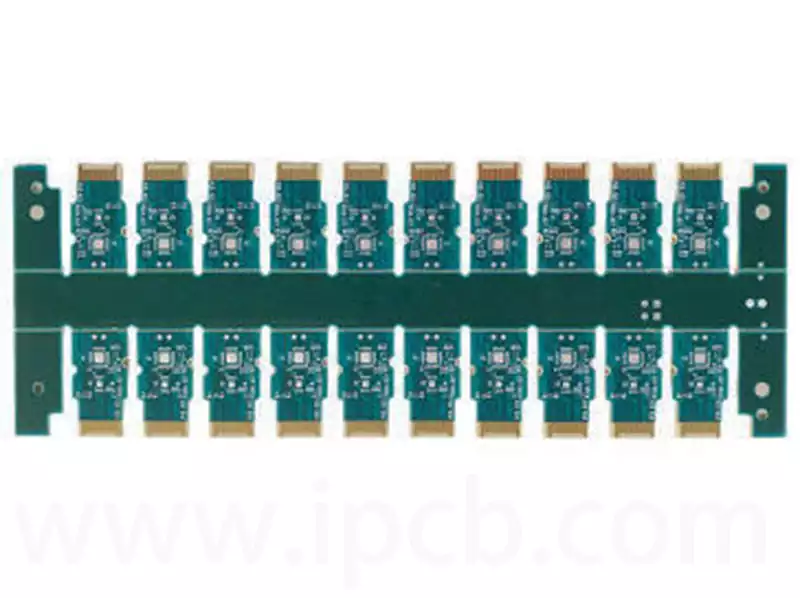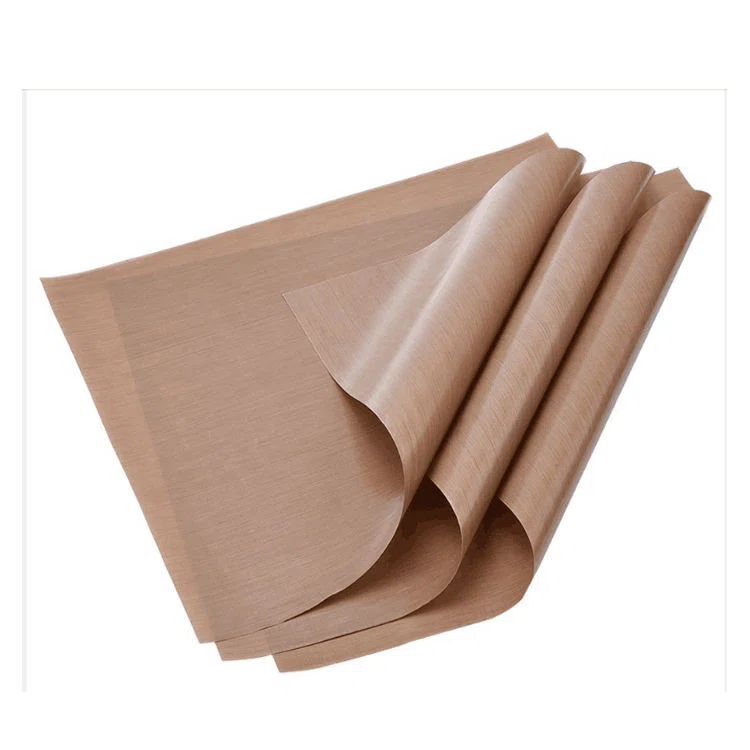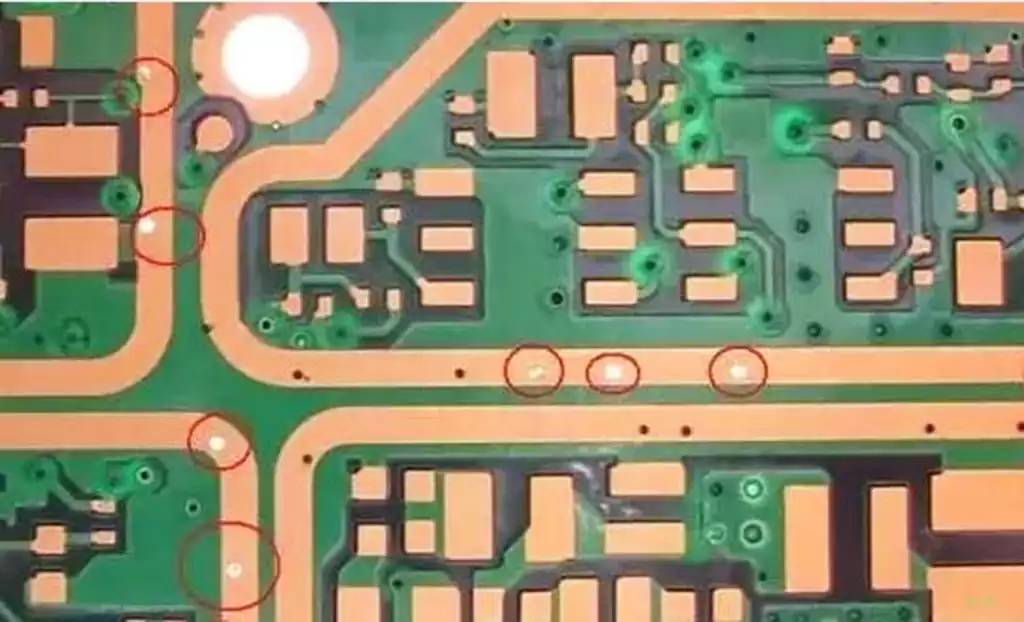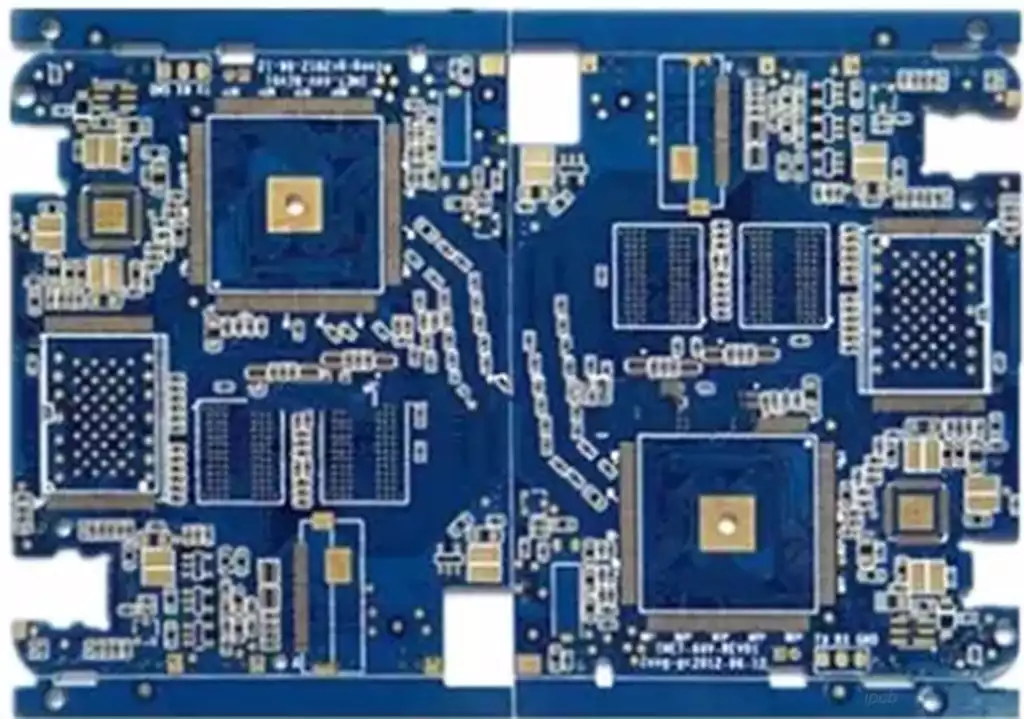In the ongoing evolution of optical module technology, PCB circuit boards face immense pressures across multiple dimensions—signalling, spatial constraints, thermal management—which continuously challenge their performance in material selection, process precision, and design logic. Specifically, core challenges manifest in the following four critical areas:
(1) The Integrity Dilemma of High-Speed Signal Transmission
As signal rates increase exponentially—soaring from 25Gbps to 112Gbps and beyond—PCB circuit board signal transmission loss becomes increasingly pronounced. According to signal integrity theory, signal loss is proportional to the square root of frequency. The high-frequency harmonic components of 112Gbps PAM4 signals cause significant superposition of conductor loss and dielectric loss.
Loss Control Presents Multiple Challenges
Traditional FR4 substrates (dielectric constant Dk = 4.4, loss factor Df = 0.010–0.015) struggle to meet contemporary demands. Their dielectric loss causes severe signal attenuation, potentially closing the eye diagram under extreme conditions. Concurrently, skin effect losses arising from copper foil surface roughness become the primary source of conductor loss in high-frequency environments.
Impedance Matching Conflicts Emerge
Within optical modules, the dielectric constant disparity between silicon photonics chips (Dk = 3.5) and PCB substrates, coupled with the interface characteristics of optoelectronic conversion devices, necessitates controlling 100Ω differential impedance with precision within ±5%. Any minute deviation may trigger signal reflection and return loss issues.
Significant Crosstalk Suppression Pressure
In high-density packages like QSFP-DD, over 120cm of circuitry must be laid out per square centimetre. The dense arrangement of 32 high-speed differential pairs alongside 8 optical channels dramatically increases crosstalk risks. To ensure signal integrity, crosstalk within the 28GHz band must be suppressed below -45dB.
(2) Physical Constraints of High-Density Integration
Optical module packaging evolves towards miniaturisation, exemplified by the continuous size reduction from QSFP to QSFP-DD. This demands efficient integration of optoelectronic components within limited PCB circuit board space, presenting dual challenges in spatial layout and manufacturing precision.
Routing Density Bottlenecks
800G optical modules demand line width/spacing (L/S) of 20μm/20μm or even 15μm/15μm. Conventional subtractive processes yield trapezoidal cross-sections due to side etching effects, making line breaks or precision failures highly likely when L/S falls below 40μm.
Conflicting Requirements in Optoelectronic Integration
The 0°±0.5° positioning accuracy demanded by fibre arrays conflicts spatially with high-speed signal layer routing. Physical deformation of fibre paths induces optical losses exceeding 0.5dB, while electromagnetic field distributions from electrical channels may interfere with optical signal transmission.
Inter-layer Interconnect Challenges
High-layer PCBs (20+ layers) have become standard for CPO (Co-Packaged Optics) technology. Inter-layer blind/buried vias require diameters below 50μm with uniform copper wall thickness, a requirement difficult to meet with traditional drilling and plating processes.

(3) Reliability Challenges in Extreme Environments
Optical modules endure prolonged exposure to demanding conditions within data centres—85°C temperatures and 85% relative humidity—subjecting PCB circuit board material stability and structural integrity to severe stress.
High Risk of Thermal Mismatch Failure
In CPO technology, the close integration of optical engines with chips substantially increases PCB circuit board thermal flux density, demanding substrate thermal expansion coefficients (CTE) with precision within ±0.8ppm/℃. Mismatched CTEs between PCB circuit board and silicon chips induce stress cracking during thermal cycling, leading to solder joint failure or circuit breakage.
Severe Material Ageing Issues
High-temperature, high-humidity conditions accelerate hydrolysis of PCB circuit board dielectric layers and copper layer corrosion. Resin content fluctuations in standard HDI boards also cause dielectric constant drift, compromising impedance stability. Verification requires reliability testing exceeding 240 hours.
Insufficient thermal dissipation
400G optical modules already exceed 10W power consumption, with 800G modules demanding even higher power. Traditional aluminium-based heat sinks cannot rapidly dissipate heat, and as a critical component of the thermal path, the PCB’s thermal conductivity directly impacts module lifespan.
(4) The Dilemma of Balancing Process and Cost
The technical demands of advanced optical modules necessitate continuous process upgrades for PCB circuit boards. However, the cost pressures arising from high-end materials and precision manufacturing have become bottlenecks in the industrialisation process.
Significant Surge in Process Complexity
Advanced techniques such as mSAP (modified semi-additive process) necessitate high-end equipment including laser direct imaging (LDI) and horizontal pulse plating, with production environments requiring Class 1000 cleanliness standards. Equipment investment and operational costs substantially exceed those of conventional HDI production lines.
Persistently Elevated Material Costs
Ultra-low loss substrates (e.g., Panasonic MEGTRON 8, Rogers RO3000 series) command prices 3-5 times that of standard FR4, while processing costs for high-volume low-profile (HVLP) copper foil substantially exceed those of conventional copper foil.
Challenging Yield Control
Factors such as lamination deviations in high-layer PCBs, dust contamination on micro-patterned traces, and micron-level misalignment in photo-optical registration all contribute to yield degradation, further escalating unit costs.
Strategies and Breakthrough Directions for PCB Technology
To adapt to technological advancements in optical modules, the PCB circuit board industry has pursued systematic innovation across three dimensions—materials, processes, and design—establishing a multi-tiered solution framework.
(I) High-End Upgrades in Material Systems
Material innovation is pivotal to overcoming signal loss and reliability bottlenecks, with technological advancement pathways centred on ‘low loss, high stability, and strong thermal conductivity’.
Application of Ultra-Low Loss Dielectric Materials
Specialised substrates with Df values as low as 0.001–0.005 are employed, such as the Isola Astra series and Shengyi Technology’s SU series. Compared to conventional materials, these reduce dielectric loss by over 60%. Combined with tunable dielectric materials featuring Dk values of 3.8–4.6, they enable dynamic impedance matching.
Widespread Adoption of High-Precision Conductor Materials
Extensive use of Very Low Profile (VLP) and Ultra-Low Profile (HVLP) copper foils minimises surface roughness (Rz), reducing skin effect losses. Concurrently, pulse electroplating technology delivers dense, uniform copper layers, enhancing signal transmission stability.
Thermal Management Enhancement Materials Development
Research and development of metal-based composite substrates with ceramic-filled dielectric layers elevates PCB circuit board thermal conductivity from conventional 0.3 W/(m·K) to over 5 W/(m·K). Combined with buried resistor/capacitor technology, this reduces the number of heat-generating components.
(II) Precision Transformation in Manufacturing Processes
The shift from ‘subtractive manufacturing’ to ‘additive manufacturing’ pushes the boundaries of miniaturisation and high-precision production.
Scaled Application of mSAP Process
Achieving 15μm/15μm fine traces through the sequence: ‘ultra-thin copper underlay – photoresist formation – electroless copper plating – electrolytic thickening – flash etching removal’. Trace cross-sections exhibit standard rectangular profiles, with impedance control precision enhanced to within ±3%.
Cluster Deployment of High-End Equipment
Replacing contact exposure machines with laser direct imaging (LDI) equipment featuring sub-5μm precision. Integrated with horizontal pulse electroplating and horizontal etching lines to ensure uniform line thickness and etching consistency, minimising process deviations.
Breakthrough in Heterogeneous Integration Processes
Direct bonding technology between indium phosphide lasers and silicon-based PCB circuit boards enables seamless integration of optoelectronic devices, minimising interconnect losses. Concurrently, machine vision-guided fibre positioning achieves alignment accuracy of ±0.1μm.
(3) Collaborative Innovation in Design Methodologies
Transitioning from singular circuit design to multi-physics co-design encompassing optical, electrical, and thermal domains, establishing a comprehensive optimisation framework.
Three-Dimensional Layered Architecture Design
Adopting a tiered strategy comprising a top-layer fibre array, intermediate high-speed signal layer, and bottom-layer power/control layer. Impedance transition between silicon photonic chips and PCBs is achieved via gradient microstrip line design (line width varying from 0.1mm to 0.15mm), reducing return loss by 8dB@56GHz.
Application of Intelligent Routing Algorithms
Developed a 3D obstacle avoidance engine based on an enhanced A* algorithm. This dynamically plans routing paths by integrating an elastic mechanical model for fibre paths with electromagnetic field maps of electrical channels. Routing completion time is reduced by 35%, while the safety margin model D_min = 0.3×λ_e + 0.7×R_f prevents optoelectronic interference.
Multiphysics Simulation Optimisation
Integrated signal integrity (SI), power integrity (PI), thermal simulation, and electromagnetic compatibility (EMC) tools predict losses, crosstalk, and thermal distribution during design, enabling early optimisation of thermal management structures and shielding.
Amidst optical module technology advancements, PCB circuit boards confront multiple challenges encompassing signal integrity, integration, reliability, and cost. Yet the PCB circuit board industry actively innovates, establishing a solution framework through material, process, and design enhancements. Material upgrades fortify foundations, process transformations push boundaries, and design innovations streamline workflows. While challenges persist, the PCB circuit board sector will undoubtedly achieve continuous breakthroughs, contributing significantly to optical module development and jointly forging new heights in optical communications.



